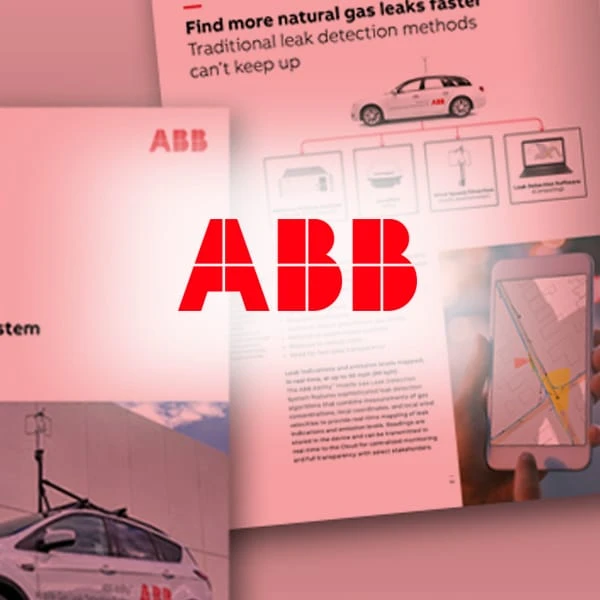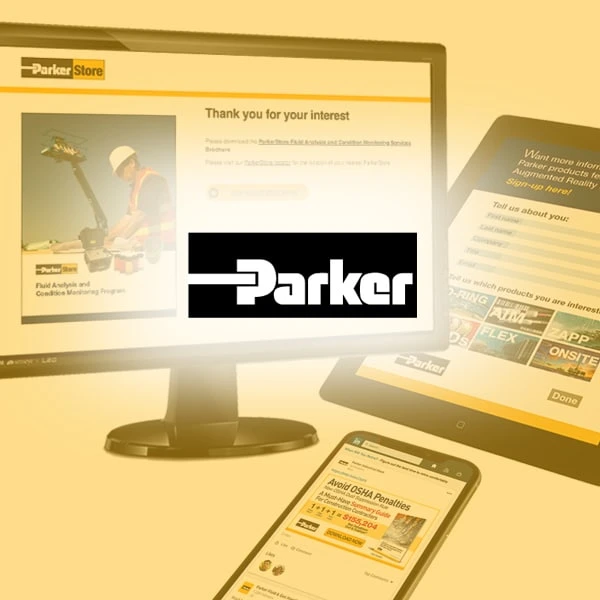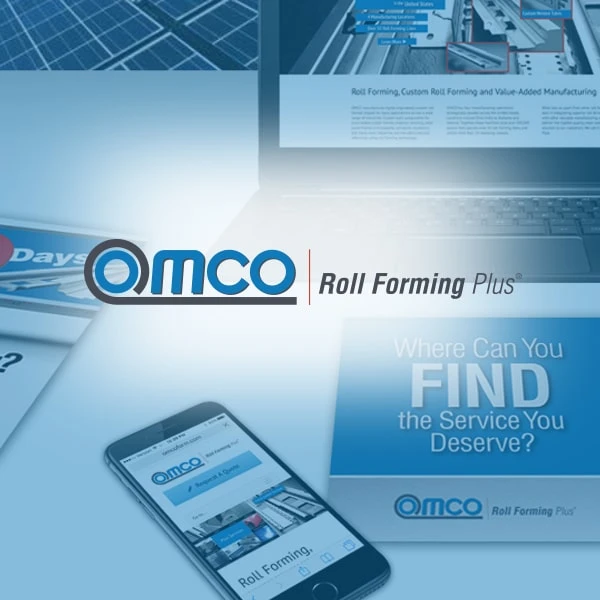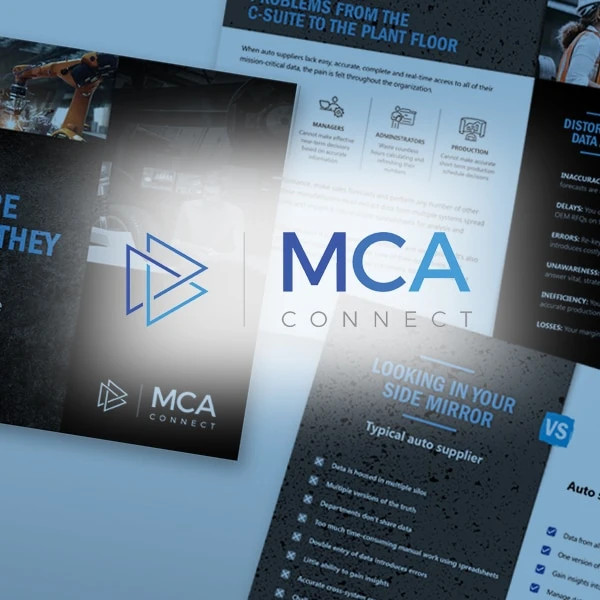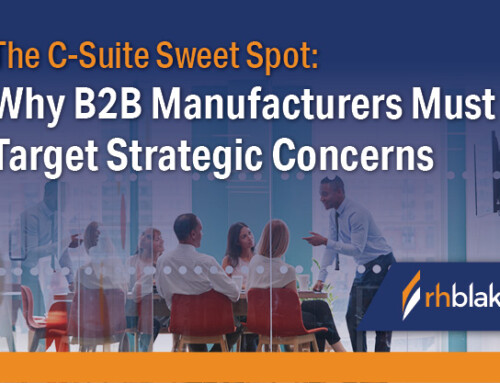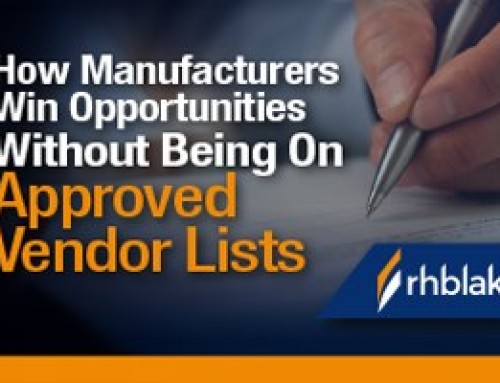You’ve done all of the hard work to create a successful marketing strategy, design an amazing website, and generate leads. Now it is time to efficiently turn those leads into customers.
How Manufacturing SaaS Companies Accelerate Sales Cycles in the Traditionally Long B2B Buying Process
You’ve done all of the hard work to design an amazing website, create a successful marketing strategy, and generate leads. Now it is time to efficiently turn those leads into customers. After all, as a manufacturing SaaS organization, you don’t have the luxury of slow sales cycles due to
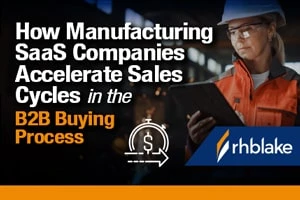
- heightened investor expectations
- increased risk of losing sales as opportunities stall
- increased risk of a competitor or an alternative approach getting into the space
- increased risk of cash flow issues
- decreased employee morale due to lack of wins
- investing resources on a sale that’s not likely to proceed when you could be focused on other, higher winning probability opportunities
- inability to meet revenue / growth targets
Accelerating the sales cycle is a lever for gaining competitive advantage. With the right approach and mindset, you will accelerate your sales cycle in this traditionally risk-averse industry.
Perform VoC Work and Build a Profile
Manufacturing SaaS companies need to understand their customers to make better informed business decisions. Conducting VoC (voice of the customer) work answers these questions and improves your marketing and sales program. Building a comprehensive audience profile, in turn, ensures that your messaging and strategies are tailored to your target audience.
No two customers are the same. Here are four steps to help you understand who you’re trying to reach and create better content for them.
Step 1: Perform VoC work
The first step in building an audience profile is to perform VoC work. This involves gathering customer feedback through surveys, interviews, focus groups, and other channels.
Ask questions about their pain points, challenges, goals, preferences, and experiences with your products and services. To get the most out of your VoC work, ask open-ended questions that encourage customers to share their thoughts and feelings in their own words.
Step 2: Build a profile
Use your collected customer feedback to build an audience profile. This profile should include information about your target customer’s characteristics, including:
- Demographics
- Psychographics
- Behavior
- Preferences
Use this data to inform buyer personas and fictional representations of your ideal customers. Also, when building your audience profile, be specific and detailed.
Step 3: Look for patterns in buyers who take too long or don’t convert
Once you have your audience profile, start looking for patterns in the data. For example, buyers who take a long time to convert have similar pain points and challenges. They typically have widely different preferences and priorities from those who quickly convert.
Some of the most common factors contributing to a longer sales cycle length include:
- A large number of stakeholders
- Recently entering the career field
- Poor decision-making skills
Offer incentives, promotions that align with their preferences and priorities, or educational content and resources that help buyers overcome challenges.
Step 4: Look for patterns in quick-moving buyers
Identifying patterns for buyers who move through your funnel quickly is just as important. Of course, searching for the correct type of customer is not a simple affair. However, several activities make this process faster:
- Hosting a compelling event: Events are a powerful way to bring the right people in and create an opportunity for them to learn about your solutions.
- Receiving funding for these events: You need to find a source of funding for your event, such as sponsors or partners.
- Employing a small, agile leadership team: A smaller, agile team works quickly and efficiently.
Using these strategies allows you to shorten the sales cycle for your SaaS company, helping you reach your goals faster and more effectively.
Get More Leads Faster
The success of any sales cycle depends on a steady stream of incoming leads. That’s why you must focus on generating more leads and doing so faster.
Begin by revamping your website, optimizing it for search engines, and creating content that educates and guides your potential customers. Engage in outreach activities, such as webinars, in-person events, and email campaigns to capture leads proactively.
Remember, lead generation is vital to minimizing the length of your sales cycle.
Inertia — Create Content that Addresses the Risks of Doing Nothing
Many potential customers hesitate to switch from their current software provider, even if your platform offers significant advantages. This inertia is prevalent in the manufacturing industry, where switching SaaS providers is seen as a significant risk and requires lengthy evaluations and stakeholder buy-ins.
To tackle inertia:
- Create content addressing the risks of doing nothing
- Use case studies, testimonials, and success stories to inspire action
- Show potential customers how your solution solves their problems and what they stand to lose if they don’t adopt it
Tackling inertia is critical to accelerating your SaaS pipeline, helping customers move through your sales cycle faster, with less friction.
Leverage Smart Paid Marketing
Many companies rely on word-of-mouth marketing, but it is a slow and inconsistent way to generate new leads. Being more proactive with your paid marketing campaigns helps you reach new customers quickly and consistently.
Inbound marketing is also effective as a long-term strategy. But when speed is of the essence, paid can be a great lever. Once you determine the right combination/formula for your journey, increased investment many times can lead to increased results. Plus, with paid promotions, you can scale your investment up and down to reflect your results. Using ads also helps you attract potential customers who are interested right now in solving the same problems you’re already solving.
Create Content that Reduces Perceived Risk
Concerns around perceived risk cause potential customers to hesitate, and that extends your sales cycle. Therefore, creating content that reduces the perceived risk of adopting your solution is essential.
Testimonials, case studies, and use cases ease prospects’ concerns about trying a new solution. The more you showcase the benefits of your software through content, the easier it is for prospects to move through the sales cycle quickly. Remember, they need to trust your product to feel comfortable buying it.
Entice with Offers
Most customers are looking for good deals, and providing offers is a great way to entice them. Consider offering the following promotions to get started:
- Free trial periods: Give customers a taste of your SaaS offering before they commit.
- Money-back guarantees: Provides customers with extra assurance that your product is worth the investment.
- Monthly instead of annual commitments: Allow customers to pay for your product every month instead of committing for an entire year.
- Additional features free of charge: Give customers a bonus for signing up with your SaaS.
- Performance-based offers. Reduce friction in the sales process and reduce risk for your prospects with offers based upon performance.
These discounts and unique offerings not only help you attract more leads but also reduce the risk associated with trying something new. Limited-time offers demonstrate your commitment to customer satisfaction and foster trust in your SaaS offering.
Align with Salespeople
Generating more leads is not enough — you also need to ensure that the leads your salespeople are attracting are qualified and your salespeople are converting them. Aligning with salespeople helps ensure they’re working on the right opportunities. Here are some things to settle between you and your sales team.
Hurdles in the sales process
First, identify any common hurdles or points of friction that might be slowing your sales cycle. For example, are there any steps in the process to simplify? Are there any changes to improve customer experience?
Ask your salespeople for feedback on what could be improved. This gives you a better idea of where the bottlenecks are and how to address them.
Buyer objections
Similarly, ask your sales team for information about the key questions and objections prospects raise. This helps you create content that speaks to their concerns and address common issues quickly.
Reasons for buyer inertia
B2B buyers often hesitate when investing in new products. Understanding the reasons behind their inertia is a great way to speed up the sales cycle. Talk with your salespeople and encourage them to share their insights into why prospects are hesitant. Use this data to develop better processes to engage leads and reduce their uncertainty.
Developing a marketing plan
Now that you better understand your prospect’s concerns and objections, it’s time to develop a marketing plan. Your plan should include everything from an ROI calculator to sales enablement content for your buyer journey. You should also create assets, such as product demos, case studies, and comparison sheets, to help prospects sell your SaaS solution internally.
These types of resources help you accelerate your sales cycle, create customer confidence in your product, and make it easier for them to eventually commit to buying it.
Focus on Integrated Marketing and Not Other Types of Marketing
One mistake that many SaaS companies make is focusing their efforts on isolated marketing campaigns. They create one-off campaigns such as email blasts, PPC ads, or webinars without paying attention to how they fit into the company’s overall marketing strategy.
Integrated marketing typically includes:
- Integrated prospecting: Understand how your leads are being sourced and track the performance of each source to determine what’s working.
- A/B testing: Experiment with different content and messaging to see what resonates most with prospects.
- Personalized outreach emails: Send targeted emails that are personalized, have a defined cadence, compelling offers or CTAs, and relevant content.
Integrated marketing allows you to build an entire funnel around a particular process, starting with generating leads and ending with closing more sales. This strategy enables you to track the performance of each campaign and use analytics to help refine your process over time.
Be Personal and Specific
Finally, don’t be afraid to get personal. You need to know your prospects inside and out to reach them effectively. Customize each approach according to each prospect’s needs, interests, and pain points. In addition, stay relevant by using the latest trends in SaaS marketing and emerging technologies. Be timely — know when it’s the right time to follow up with a lead or send an offer — and focus on the most effective, highest-performing channels for reaching your target audience.
Being personal shows your prospects that you genuinely understand their needs and are willing to invest in them.
Accelerate Manufacturing SaaS Pipeline with RH Blake
The key to success in the SaaS world is understanding the nuances of your customer’s needs and wants and using that knowledge to create a tailored sales cycle. At RH Blake, we specialize in helping industrial and Manufacturing SaaS companies accelerate their pipelines without sacrificing customer experience. If you’re looking for ways to improve your sales cycle and close more deals, contact us today and let us help you reach your goals.
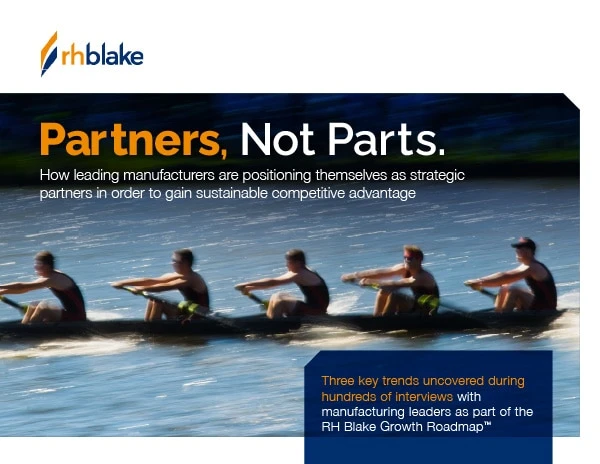
Why do customers prefer manufacturing partners over vendors?
Key marketing insights gained after speaking with hundreds of manufacturing leaders who are involved in purchasing complex products and offerings.
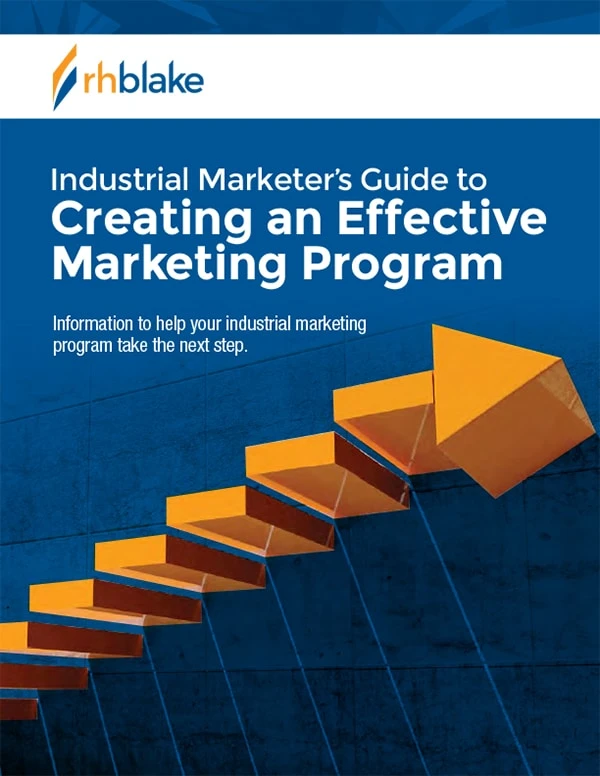
Industrial Marketer’s Guide to Creating an Effective Marketing Program
147 pages of actionable ideas to help you create a winning marketing strategy and program

Industrial Marketer’s Guide to Creating an Effective Marketing Program
147 pages of actionable ideas to help you create a winning marketing strategy and program
Related Clients


